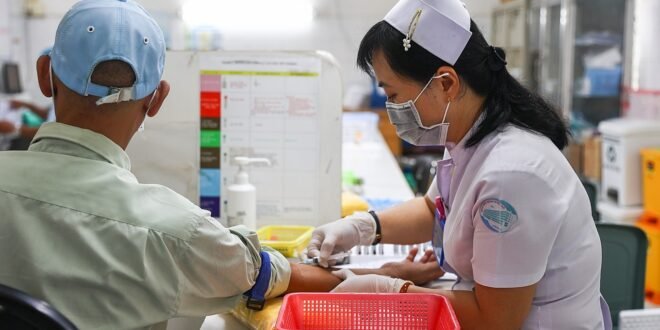The Growing Burden of Non-Communicable Diseases in Vietnam
Non-communicable diseases (NCDs) such as cancer, cardiovascular diseases, diabetes, and chronic respiratory diseases are a major public health challenge in Vietnam. According to recent data, these conditions account for 80% of all deaths and place a significant strain on the country’s healthcare system. Their silent onset, long progression, and severe consequences make them particularly dangerous, often leading to late diagnosis and poor outcomes.
At a scientific conference held in Hanoi, former Deputy Minister of Health Associate Professor Dr. Nguyen Thi Xuyen highlighted the increasing prevalence of NCDs and their impact on public health. She emphasized that Vietnam is facing a growing burden of disease and a high mortality rate due to the rise in these conditions. The discussion focused on new advances in diagnosis and treatment, with experts from the Vietnam Medical Association and Roche Diagnostics sharing insights on how to tackle this crisis.
Key Risk Factors and Vulnerable Populations
Several factors contribute to the spread of NCDs. These include smoking, excessive alcohol consumption, diets low in fruits and vegetables, physical inactivity, and high salt intake. People who are overweight or obese, or those with lipid disorders, are at higher risk of developing cardiovascular diseases, diabetes, cancer, and chronic respiratory diseases. Males, in particular, are more vulnerable to these conditions, according to Dr. Xuyen.
Professor Dr. Nguyen Viet Tien, vice chairman of the National Medical Council, described NCDs as “underlying waves” threatening public health. He cited alarming statistics showing that cardiovascular diseases alone claim around 200,000 lives annually. There are nearly 183,000 new cancer cases each year, with 122,000 resulting in death. Chronic respiratory diseases affect 4.2% of people over 40, and the prevalence of diabetes among adults stands at 5.4%.
Late Diagnosis and the Need for Early Intervention
One of the most concerning issues is the late stage at which many patients are diagnosed. Official data from the health ministry shows that 65% of lung cancer patients are diagnosed at stages 3 or 4, significantly reducing the chances of successful treatment. Similarly, around 50% of people with hypertension are unaware of their condition, and only a third receive treatment, with many not adhering to prescribed therapies.
This highlights the critical need for early diagnosis. Timely detection not only improves survival rates but also allows for interventions such as lifestyle changes and preventive therapies. Experts stress that early identification can transform patient outcomes and reduce the long-term burden on the healthcare system.
The Role of Advanced Diagnostics in Proactive Care
In terms of diagnostics, experts believe that high-value, personalized medical testing solutions are essential in shifting the healthcare model from reactive treatment to proactive care. Professor Dr. Nguyen Van Kinh, vice president of the Vietnam Medical Association, compared diagnostics to a “compass” guiding all treatment decisions. He explained that advanced biomarkers allow doctors to create tailored treatment plans based on genetic, environmental, and lifestyle factors rather than using a one-size-fits-all approach.
For example, a simple blood sample can be used to analyze tumor-derived DNA, enabling cancer monitoring and early relapse detection without the need for invasive procedures. This kind of innovation is paving the way for personalized medicine and more effective disease management.
Prevention and Public Awareness
Despite their severity, many of these diseases are largely preventable. Experts urge the public to take a proactive approach to their health by maintaining a balanced diet, increasing physical activity, and avoiding risk factors such as smoking, alcohol abuse, and chronic stress. Regular health check-ups and awareness campaigns are also crucial in identifying potential risks early and preventing the onset of NCDs.
 Info Malang Raya Its All About World News
Info Malang Raya Its All About World News



